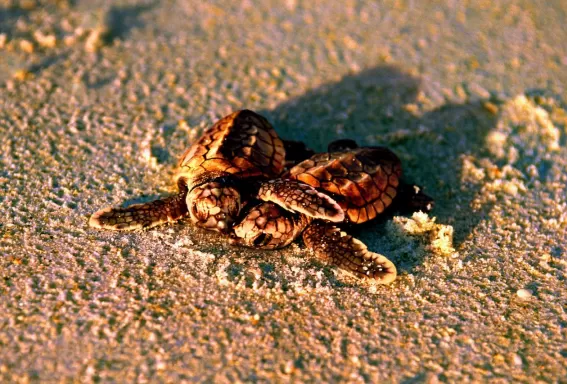The Fort Myers Sea Turtle Conservation
From dolphins and manatees to pelicans and egrets, we’re incredibly lucky to have such a wide variety of fascinating animals in Southwest Florida. However, none of them arrive in such spectacular fashion as the loggerhead sea turtle. Each year sometime around May, female loggerheads (amongst other sea turtle species) instinctively return to the beach where they were born and dig deep pits in the sand to serve as nests for their clutch of eggs. Each female typically lays over 100 eggs, buries them and then quickly returns to the safety of the ocean. After about 80 days, the hatchlings pop up out of the sand to make their perilous way to the water, hoping to avoid hungry predators along the way.
Animal predators aren’t the only threat to loggerheads though. The turtles were once extensively hunted for their meat and eggs, and other human interference, such as trawling, ocean pollution and habit destruction, has put them on the endangered animals list.
However, efforts are being made right here on the coast of Fort Myers to help bring these wonderful creatures back from the brink of extinction. Local organizations such as Turtle Time on Fort Myers Beach, SCCF on Sanibel Island, and the nationwide Sea Turtle Conservancy collect data on sea turtles and make efforts to protect their populations.
While the tireless efforts of these organizations have helped the sea turtle population immensely, it’s also important to do your part as well. How can you help protect sea turtles in the Fort Myers area? Check out these quick tips:
- Cover or turn off any beach-facing lights from May to October, as they can confuse sea turtles attempting to head toward the ocean.
- Don’t leave any beach furniture or trash out during that time as well (it’s also illegal), as the sea turtles can get entangled in things like beach chairs.
- If you want to observe sea turtle behavior, do so from a respectful distance, and never disturb a sea turtle or its nest.
Our shores boasts beautiful nature and incredible wildlife. Do your part in protecting our animals, plants and environment.




